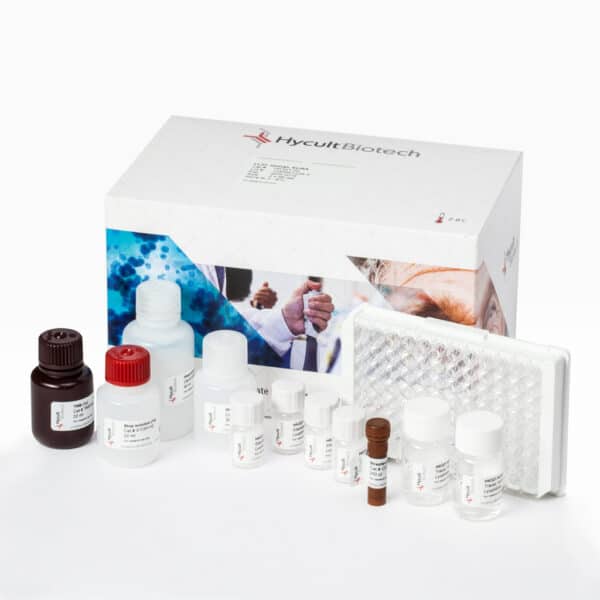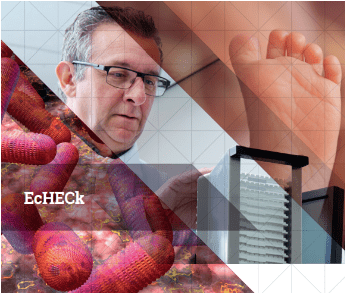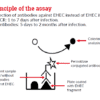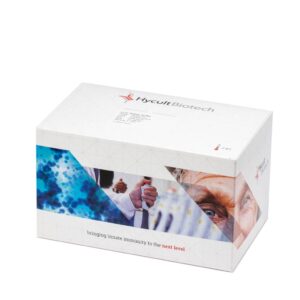EcHECk, ELISA kit
Increased window of detection, results in hours instead of days!
The EcHECk anti-EHEC O157:H7 IgM assay is a serological assay for standardized detection of antibodies against Enterohemorrhagic Escherichia coli (EHEC) O157:H7 LPS.
Read more€2,080.00
Increased window of detection, results in hours instead of days!
Developed in cooperation with; Radboud University Medical Center (NL) and the University Clinic of Münster (DE)
The EcHECk ELISA enables reliable detection of IgM antibodies against EHEC bacteria in serum up to two months after onset of infection. Detection of EHEC is currently performed by PCR or culturing and these methods are not able to identify EHEC after one week of infection.
Using this EcHECk ELISA kit to determine a possible EHEC infection will offer you a reliable diagnosis for a longer time frame and start the correct treatment.
EHEC (or Shiga-toxin producing Escherichia coli; STEC), serotype O157:H7, is recognized worldwide as a dangerous bacterial pathogen responsible for foodborne infections in humans. EHEC contamination occurs through:
– The ingestion of contaminated food or water
– Person-to-person transmission
– Contact with ruminants or their contaminated environment.
The main symptoms are abdominal cramps and diarrhea, which is bloody in about 60% of patients and occurs after a median incubation period of three days. About 5–10% of people diagnosed with STEC O157 infection develop a life-threatening complication known as hemolytic uremic syndrome (STEC-HUS).This disease is defined by mechanical hemolytic anemia, thrombocytopenia, and acute renal injury and may lead to renal failure.
EHEC infections are detected by an examination of fecal material, mostly through simultaneous testing of stool culture, shiga toxins immunoassays, and/or polymerase chain reaction PCR assays for the detection of shiga toxin (Stx) genes.
However, the presence of EHEC in the intestines declines rapidly during the first 7 days of illness, whereas the average time between the first day of diarrhea and the development of HUS is approximately 5-13 days.
As a result, examination of stool samples and/or PCR are only able to detect EHEC O157 infections for a short period of time after disease onset. In contrast, serum IgM antibodies to lipopolysaccharide (LPS) of EHEC O157:H7 can be detected from 5 days up to 2 months after onset of the symtoms.
The anti-EHEC O157:H7 IgM assay (cat# HK508) is a robust serological assay for standardized detection of these IgM antibodies against EHEC O157:H7 LPS and can be used as an additional method improving the detection of EHEC infections.
The key advantages:
– Reliable fast and extended detection of EHEC infection
– Prevention of medical escalation
– Save time and costs
Samples and standards are incubated in microtiter wells coated with LPS recognizing IgM EHEC O157:H7. Biotinylated tracer antibody will bind to the captured Human-anti-EHEC O157:H7 IgM. Streptavidin-peroxidase conjugate will bind to the biotinylated tracer antibody. Streptavidin-peroxidase conjugate will react with the substrate, tetramethylbenzidine (TMB). The enzyme reaction is stopped by the addition of oxalic acid.
The absorbance at 450 nm is measured with a spectrophotometer. A standard curve is obtained by plotting the absorbance (linear) versus the corresponding concentrations of the EcHECk standards (log).


















